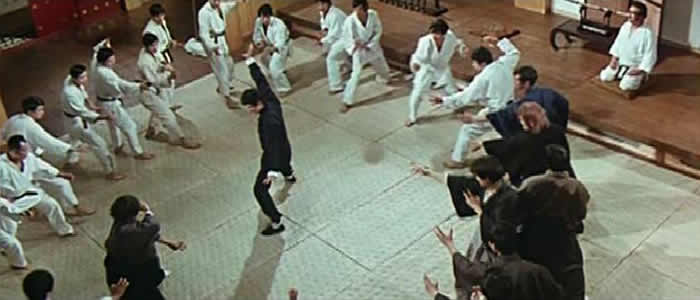The following is my rant and download of important points from last Tuesday’s training:
Multiple opponents practice is in many ways the opposite, and an important counterbalance, to regular sparring practice. Understanding this will allow you to make best use of multiple opponents training. I’m speaking here of unarmed practice.
Individual sparring simulates a consensual and “fair” one-on-one duel. The opponents stand in each other’s intimate personal space*, and cooperate to stay there in order to test techniques and prove ones fighting abilities. Outside the dojo though, this attitude can lead to disaster. A little irrational and compulsive “mano-a-mano” can easily escalate when sudden hatred or terror causes one person to over react and pull a knife. It can be a slippery slope, a cascade of violence, when primitive instincts are involved. *(read On Killing, by Lt. Col. Dave Grossman)
On the other hand, multiple opponents practice simulates an “unfair” situation where you’re outnumbered and out-powered already. By definition, it is to your disadvantage (as it should be for it to be a worthwhile exercise), so escalation is already presumed. Hence, if you cooperate and “stand your ground” as you would while sparring, you will lose. You’ll be surrounded, cornered, jumped, and dragged to the ground and submitted. It’s not like the movies where opponents only attack one at a time.
Multiple opponents practice serves as an important reminder that even though you may be highly skilled, you can still be easily defeated by moderately skilled opponents who use even a smidge of strategy and commitment. So, to stay and fight, “see what happens”, or see how fate will suddenly and magically turn things in your favour, is not the sensible thing to do when it comes to your own survival.
The primary approach to practice then, is not your ability to fight, but your ability to judge the situation wisely to know when to attack, when to retreat or flee, and when to wait. Work on rearranging the “chess pieces” to your favour, instead of fighting as if you’re the stronger one (good luck!). It goes without saying that one must control the situation, but getting stuck in a sparring mindset or fixed stance (or grip), or let your ego or tunnel vision fool you into doing so, will lead to failure. Always have your exit plan ready, while maintaining close watch on your other opponents and the environment. Focus on controlling or dispatching one opponent at a time, while maintaining a safe distance from the others. Be a moving target and remember the importance of aerobic fitness and escaping skills. Self-preservation comes first.
There are strategies to multiple opponents practice as well, such as (in no particular order):
- lining up your opponents and using the one closest to you as a shield against attacks from the others.
- creating fear in your opponents by sending a “brutal message” by “making an example” of one of your opponents, or taking an opponent as “hostage” to negotiate your safe passage.
- fleeing and/or finding a game changer (weapon, police, friends, etc).
- tactically communicating on verbal, physical, and subliminal levels to de-escalate the situation
But apart from these strategies, the approach to practice that strangely, isn’t always as intuitive as it should be (for males who are taught from an early age to be heroic “because the good guys always win”) is: the ability to evade, and live to fight another day.






Being able to fly always helps too!
We, women, usually don’t need a reminder to get the %#* out of there, even with a single opponent. We usually need a reminder to disable the adversary before he chases after us ! Would be really fun to try an “escaping drill”, with the objective to get to the gym door – let’s put it on the list for our next joint training!